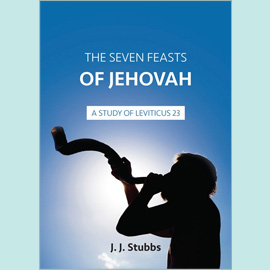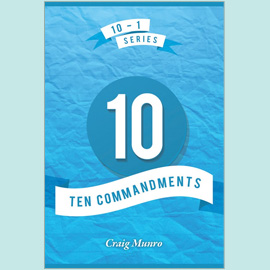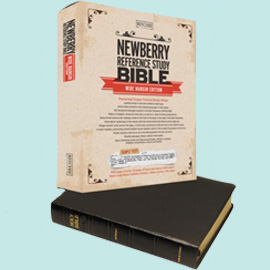(The following introductory paragraph commenced last month’s article on Marks of Consecration. It has been repeated this month in order to emphasise its important truth.)
Introduction
Consecration for the believer means total devotion to Christ. It is more than just an attitude of mind; it is a complete way of life. We recognise that Christ has an absolute claim upon us. All that we are and have are His and, therefore, day by day we should live for His glory alone. Throughout the Scriptures there are vivid pictures of consecration and, not surprisingly, they all lead us back to the cross. Calvary stands central to the purposes of God. When we were first saved we rejoiced that, on the cross, Christ died for us. As we advance in knowledge of the Word, and grow spiritually, we begin to understand that the cross also determines how we should think and act as we serve our Lord.
The Blood Marks
Before they were ready to serve God in the tabernacle, Aaron and his sons were washed with water, clothed in linen, anointed with oil, and marked by blood. A special ceremony was performed in which three animals were sacrificed: first, a young bullock for a sin offering, because the matter of sin precluded acceptable and effective service for God; second, a ram without blemish for a burnt offering, speaking of wholehearted dedication to God; and third, another ram called “a ram of consecration” was offered (Ex 29.22). The blood of this other special ram was taken and applied to the tip of the right ear, the right thumb, and the right big toe of both Aaron and the priests, before it was sprinkled upon the altar (v 20). The application of the blood of the sacrifice in this way signified that the whole body of the priest was to be set apart and dedicated to the service of the Lord. The marked ear suggests a readiness to hear and obey the voice of God. It would also remind us that our thinking and motives should be sanctified to His service. The right thumb speaks of priestly ministry and all that is done for God: our actions should glorify Him. The right great toe suggests that the movements of the priest were also to be directed by God. In the same way, we are to be guided by Him.
After all of this was done, the hands of the priests were filled with offerings - the shoulder and breast of the ram, along with the fat of the animal and unleavened bread. The shoulder portion was waved before the Lord in a horizontal side-to-side movement, and the breast was heaved with a vertical up-and-down action, as before the eye of God. The flesh of the sacrifice was roasted, and became the food of the priests. In the context of Exodus 29, the word “consecration” means ‘to fill the hands’. When we are devoted to God’s service He delights to provide us with whatever we need, so that we can offer it back to Him. Christ has been given for us and, in turn, we offer Him back to God in praise and worship. He is also the necessary food for our souls and, as we feed upon Him, we become stronger and more effective in worship and in service. God gives us physical strength and various talents to be used in bringing glory to His name. Even the material things, and any riches we enjoy from His hand, can be presented back to Him for His honour.
Frances Ridley Havergal penned the words of a hymn that, over the years, have aptly expressed the desire of many hearts:
Take my life and let it be
Consecrated, Lord, to Thee.
Take my moments and my days,
Let them flow in ceaseless praise.
Take my hands and let them move
At the impulse of Thy love.
Take my feet and let them be
Swift and beautiful for Thee.
The Pierced Ear
A further picture of consecration is seen in the decision of a Hebrew servant to deny himself freedom after seven years of service. Instead of walking out “free for nothing”, as was permitted under the law (Ex 21.2), he chose rather to remain, along with the family he had acquired, with his master, and serve him forever. This solemn decision was not obligatory but, once taken, it was irrevocable. His declaration was all the more poignant, being motivated solely by love: “I love my master, my wife, and my children; I will not go out free” (v 5). As a permanent and public sign of the servant’s pledge, his ear was pierced through with an awl against the doorpost of the house (v 6). From then on, others would see the scar on his ear lobe. Perhaps, as he frequently passed through that door, he also would notice the mark on the wooden doorpost, and thus be reminded of his commitment. He was marked for life.
We see in the life of Christ – as always, our greatest example – that He came not to be served, but to serve, and to give His life a ransom for many (Mk 10.45). In everything He pleased His Father, and was committed to doing His will (Jn 8.29). Time and again, love moved Him to come to the aid of sinners in their need; love led Him to the cross without wavering; and love kept Him on the cross. His mockers cried out “Save thyself, and come down from the cross” (Mk 15.30), but He would not, and could not, until He had paid the full price for our sins. He would not go out free.
A more modern illustration of consecration is seen in the life of William Borden of Yale, a young, privileged American, who renounced his family fortune and a life of ease and comfort to set sail for China in the service of the Gospel. He never reached his goal; during an extended stopover in Egypt on the journey east he contracted spinal meningitis, and died at the age of 25 on 9th April 1913. He is buried in Cairo, and the inscription on his tombstone includes this telling phrase: “Apart from faith in Christ, there is no explanation for such a life.” The words Borden wrote in the flyleaf of his own Bible remain powerful and challenging: “No reserves; No retreats; No regrets!” They mean that, for William Borden, and many others who have faced up to the responsibilities of crowning Christ as Lord, it must be all or nothing.
There can be no holding back: “I beseech you therefore, brethren, by the mercies of God, that ye present your bodies a living sacrifice, holy, acceptable unto God, which is your reasonable service” (Rom 12.1). There can be no going back, and no looking back for, as the Saviour said, “No man, having put his hand to the plough, and looking back, is fit for the kingdom of God” (Lk 9.62). The apostle Paul was one who kept his eye fixed straight ahead on the goal: “… this one thing I do, forgetting those things which are behind, and reaching forth unto those things which are before, I press toward the mark for the prize of the high calling of God in Christ Jesus” (Phil 3.13-14). For him, Christ was all.
May we too press forward, and be encouraged to remember these three striking pictures of consecration: the nail prints, the blood marks, and the pierced ear.
(Concluded)









